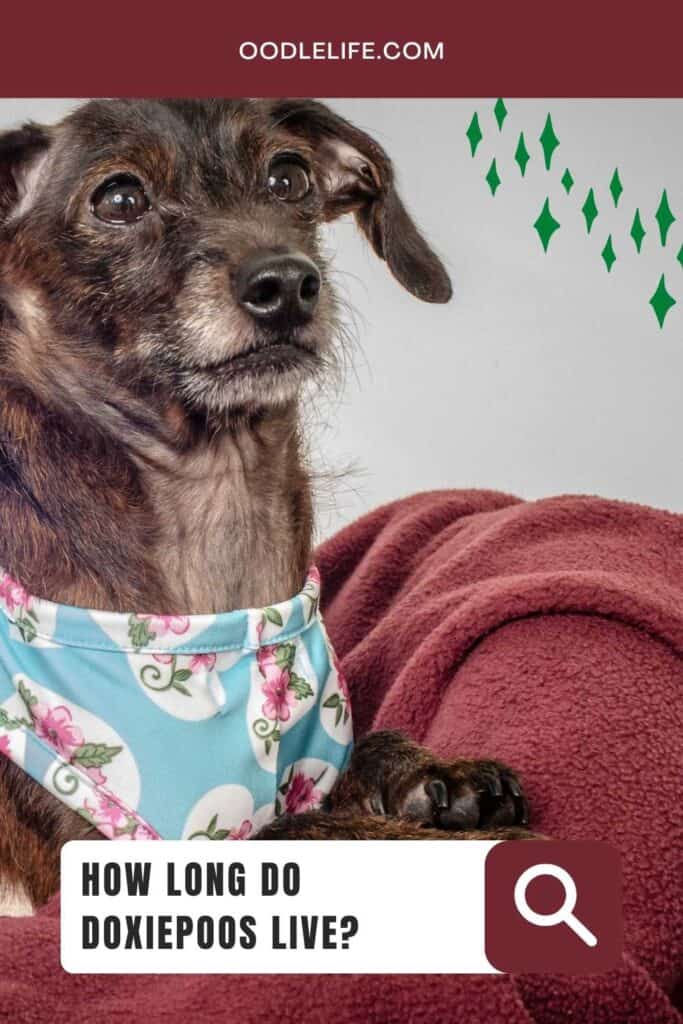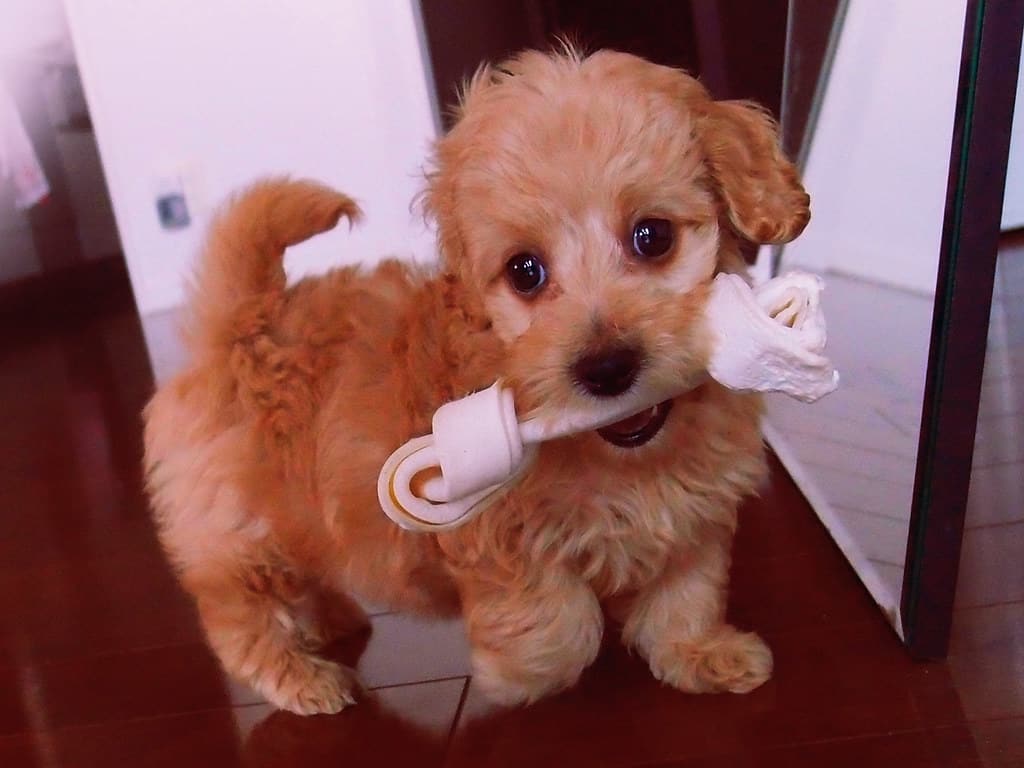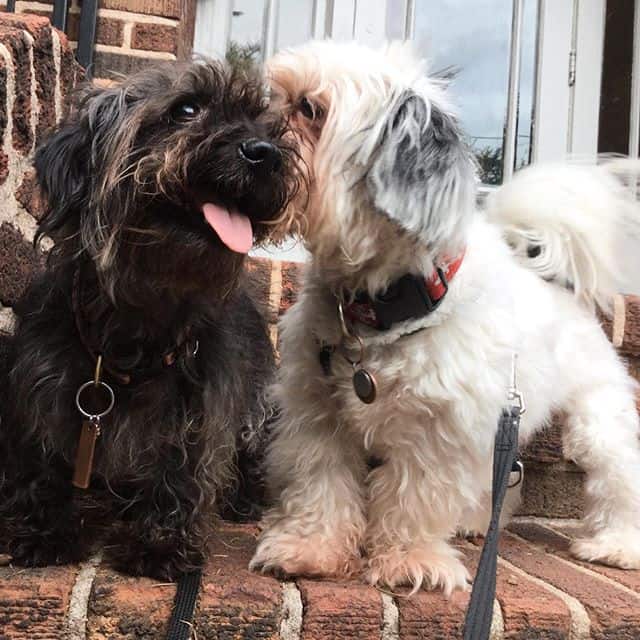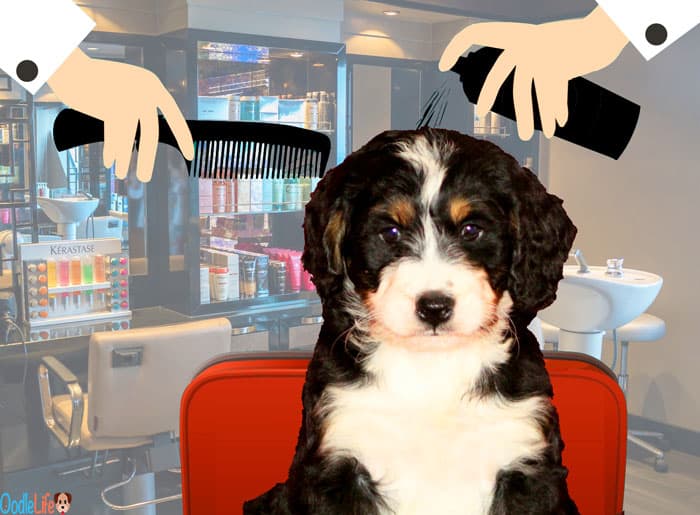How Long Do Doxiepoos Live? A Doxiepoo Lifespan Guide
Once you’ve picked out your new Doxiepoo, it’s time to take it home and start your new life together. You’ll have to learn their temperament, their likes and dislikes, and how to train them properly. So how long do Doxiepoos live?

Perhaps, more important than all of these is being aware of your dog’s lifespan and the potential problems they could face. This article will provide you with in-depth knowledge about the Doxiepoo and their potential health risks, as well as a suitable diet and fitness activities to keep them around for as long as possible.
How long do Doxiepoos live?
The average lifespan of a Doxiepoo is around 10 to 15 years depending on size. Smaller sized Doxiepoos will live longer. Your Doxiepoo is considered small if its adult weight is less than 8 pounds. (The average Doxiepoo weight is 8-12 pounds).

Doxiepoo Health and Potential issues
Did you know that small breed dogs tend to live longer than large breed dogs? Larger dogs have an accelerated period of growth in puppyhood—veterinarians speculate this has something to do with why they do not live as long as the small breeds. Since doxies and poodles don’t grow much at all, they benefit by enjoying longer lifespans.
Moreover, since hybrid breeds are less susceptible to hereditary complications than the purebred breeds, Doxiepoos fall right into that less susceptible to hereditary issues category. But, your Doxiepoo may still have health problems that are common to both parent breeds.
Major health concerns for Doxiepoos:
- Bloat
- Mast Cell Tumors
- Intervertebral Disc Disease
- Liver Shunts
- Hip Dysplasia Bloat
- Progressive Retinal Atrophy
Additional Concerns:
- Canine Cushing’s Disease
- Legg-Calve Perthes Disease
- Addison’s Disease
Intervertebral Disc Disease (IVDD): The Dachshund is more affected by IVDD than any other breed; moreover, approximately 19% to 24% are affected. IVDD causes disks between the spine’s vertebrae to either bulge or burst.
Consequently, the vertebrae press on the nerves, leading to excruciating pain. IVDD can result in incontinence, nerve damage, and worse, it can paralyze your dog.
Hip Dysplasia: This condition occurs when a malformed hip joint does not allow the thigh bone to fit in its proper place. That leads to discomfort, pain, and even limping. Severe cases can result in arthritis or lameness, at which point surgery is needed.
Any breed of dog with hip dysplasia should not be permitted to breed, so be sure that your potential puppy’s parents have no history of this condition.
Even though this condition is hereditary, rapid weight gain can trigger hip dysplasia as well. As your pup is growing, make sure they aren’t jumping around in excess.
Progressive Retinal Atrophy ( PRA): This condition affects the retina of the Doxiepoo, and it can eventually cause blindness.
Mast Cell Tumors: These tumors are most commonly found on a dog’s neck area or head and can look many different ways. They can range from small and harmless to large and life-threatening. If you notice any bumps on your pet, contact your veterinarian at your earliest convenience.
Liver Shunts: Signs of liver shunts include, circling, seizures, stunted growth, and staring at nothing. Note that Dachshunds are more susceptible to this condition than any other breed of dog.
Patellar Luxation: This joint issue is common to the Doxiepoo. This condition refers to the condition where the knee joint slides easily in and out of place; this often causes pain lameness that happens intermittently. Surgery can correct some cases of this condition. However, surgery is not always possible.
Bloat: Left untreated, Bloat is a condition that could be fatal to your Doxiepoo. This illness occurs when your dog’s stomach gets filled with gas, food, or fluid, and it expands to dangerous levels. This expansion puts pressure on the surrounding organs, which is a safety concern.
In rare cases, your dog’s stomach will twist and they may suffer gastric torsion. That means that blood will get trapped in their stomach, which prevents blood flow to vital areas of the body such as the heart.
This situation can worsen in just a few hours if your Doxiepoo isn’t taken to the veterinarian straight away. If you notice symptoms like excessive drooling, a swollen stomach, pale gums, or unsuccessful vomiting attempts, seek medical services immediately.
Your vet will probably remove any excess air from the stomach by using a hollow needle or a stomach tube. In the instance that your Doxiepoos stomach has twisted, the vet will reposition it into the correct location. There are some cases when dogs that have bloat don’t survive, even if they receive treatment.
Additional issues to be aware of when you have a Doxiepoo are eye problems, heart disease, skin problems, urinary tract infections, and ear infections. Be mindful that it’s really easy for a Doxie to get obese; the extra weight can result in back problems for your companion.

Doxipoo Diet
Dogs can eat differently, even if they’re the same breed. That being said, your average Doxiepoo should be eating between 1½ to 2 cups of dry dog food each day, preferably from a high-quality brand. The food should get divided into two or smaller meals throughout the day.
Ensure that you’re not feeding your Doxiepoo too much every day, as it could lead to health issues. Be careful with adding extra food to his or her bowl, your table scraps, or extra treats for good behavior.
You can help to prevent Bloat by making sure your dog has a steady diet and that they don’t eat too quickly. Additionally, don’t allow them to drink exorbitant amounts of water before or after they’ve finished eating. Make sure they wait at least one hour between physical activity and eating.
Lifestyle Habits
You should take your Doxiepoo for a few walks every day while allowing them a couple of hours of playtime as well. If you can find some other dogs that your Doxie gets along with, even better. This hybrid is known to roam around when they’re let loose, so it’s a good idea to keep them on a leash or within a small fence when you take them outdoors.
Doxiepoo Grooming

You have to take care of your Doxiepoos grooming needs, although their coats may or may not shed. Should your dog get a shorter coat like their Dachshund parent, you will hardly ever have to groom their fur.
On the other hand, the curlier, longer coat that their Poodle parent has would require an occasional trim and frequent brushing.
They should get a thorough bath when necessary. You also have to trim their nails so that they don’t experience cracking or overgrowth.
Also, you have to check your Doxiepoos ears regularly for any symptoms of an ear infection like a bad odor, tenderness, or redness. Doxiepoos are prone to getting ear infections, so it would be helpful to do a routine cleaning with a cleanser recommended by the veterinarian.
Lastly, brush your dog’s teeth at least two to three times every week to keep harmful bacteria away, and to keep their health in order.
Final Thoughts
Your Doxiepoo can have a wonderfully full and long life if cared for properly. They’re sweet and affectionate, spunky dogs that have a lot of love to give. Doxiepoos have to maintain a healthy diet and a moderate level of physical activity to keep health problems at bay.
This guide has hopefully helped you to understand the best way to take care of your pup. Remember to take your dog to the veterinarian immediately if you notice any of the symptoms listed. Above all, the best way to make sure your Doxiepoo has a long and meaningful life is to provide them with love, stability, and attention.